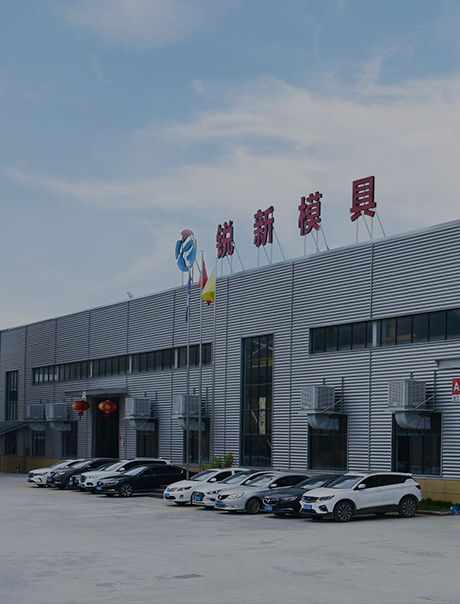What is DC motor progressive die
A DC motor progressive die refers to a type of manufacturing process used to create the components or parts of a direct current (DC) motor.
Progressive die is a method commonly used in metalworking, specifically in the production of stamped parts. It involves a series of operations or stages performed on a strip of metal to gradually transform it into the desired shape or form. The strip of metal is fed through a die that consists of a series of consecutive stations, each performing a specific operation.
In the context of a DC motor, a progressive die would be designed to produce the various components of the motor, such as the rotor, stator, armature, brushes, and other necessary parts. Each station in the die would perform a specific operation, such as cutting, bending, shaping, or punching, to create a specific feature or form in the metal.
The progressive die process allows for efficient and automated production of the DC motor components. As the strip of metal progresses through the die, each station carries out a specific operation, resulting in a finished part at the end of the process. This method enables high-speed production and ensures consistent quality and accuracy of the motor components.
Overall, a DC motor progressive die is a specialized manufacturing process used to produce the various components of a DC motor through a series of sequential operations, resulting in efficient and precise manufacturing of the motor parts.
Enhancing DC Motor Efficiency with Progressive Dies
Using progressive dies in the manufacturing process of DC motors can contribute to enhancing their efficiency in several ways:
1. Consistent Quality: Progressive dies ensure consistent and precise production of motor components. The accuracy and uniformity achieved through the progressive die process lead to better-fitting parts, reducing any mechanical discrepancies that may affect motor performance.
2. Reduced Material Waste: Progressive dies optimize material usage by minimizing scrap and waste. The progressive die design allows for efficient nesting of parts within the metal strip, maximizing the utilization of the material. This reduction in waste leads to cost savings and a more environmentally friendly manufacturing process.
3. Enhanced Production Speed: The progressive die process enables high-speed and automated production of DC motor components. By incorporating multiple operations into a single die, the time required for manufacturing each part is significantly reduced. The increased production speed translates to higher overall manufacturing efficiency.
4. Streamlined Assembly: With precise and uniform components produced using progressive dies, the assembly process becomes more streamlined. Well-matched parts fit together seamlessly, reducing the need for adjustments or rework during assembly. This results in faster and more efficient motor assembly, improving overall productivity.
5. Improved Motor Performance: The use of progressive dies ensures consistent dimensions and tolerances in motor components. This consistency is crucial for achieving optimal motor performance. Accurate and well-aligned parts reduce friction, minimize energy losses, and improve the overall efficiency and reliability of the DC motor.
By employing progressive dies in the manufacturing process of DC motors, manufacturers can achieve higher levels of efficiency, quality, and performance. The streamlined production, reduced material waste, and enhanced precision contribute to more reliable and energy-efficient DC motors.
Maximizing Efficiency: The Benefits of DC Motor Progressive Dies
DC motor progressive dies offer several benefits for maximizing efficiency in the manufacturing process. Here are some key advantages:
1. Cost Reduction: Progressive dies enable high-speed, automated production, resulting in significant cost savings. The efficient use of materials reduces waste and minimizes the need for additional machining or secondary operations. Additionally, the streamlined production process reduces labor costs and increases overall productivity.
2. Improved Accuracy and Precision: Progressive dies ensure consistent and precise manufacturing of DC motor components. The progressive nature of the die allows for multiple operations to be performed in a sequential manner, ensuring accurate alignment and dimensioning of the parts. This precision leads to better performance and reduced losses in the motor.
3. Time Savings: Progressive dies eliminate the need for multiple setups and tool changes. Since all the required operations are incorporated into a single die, the manufacturing process becomes more time-efficient. This results in faster production cycles and shorter lead times, enabling manufacturers to meet demand more effectively.
4. Enhanced Component Quality: The use of progressive dies helps maintain a high level of quality in DC motor components. The consistency achieved through precise die designs ensures uniformity in the parts, minimizing variations that could affect motor performance. This leads to improved reliability, reduced maintenance, and fewer warranty claims.
5. Scalability and Flexibility: Progressive dies offer scalability, allowing manufacturers to increase production volumes easily. As demand grows, additional dies can be added to the production line to meet the increased requirements. Furthermore, progressive dies can be designed for flexibility, accommodating variations in motor designs and customizations without significant retooling or setup changes.
6. Automation Integration: Progressive dies lend themselves well to automation integration. By incorporating automated feeding systems, robotics, and control systems, manufacturers can achieve a higher degree of process automation. This not only improves efficiency but also ensures consistent and repeatable production results.
7. Continuous Process Improvement: The progressive die process allows for easier identification of bottlenecks and inefficiencies in the manufacturing process. Manufacturers can analyze each station's performance and optimize operations to further enhance efficiency. Continuous process improvement efforts can lead to ongoing cost reductions and improved overall productivity.
In summary, the use of progressive dies in the manufacturing of DC motors offers numerous benefits for maximizing efficiency. Cost reduction, improved accuracy, time savings, enhanced component quality, scalability, automation integration, and continuous process improvement all contribute to a more efficient and productive manufacturing process.
 Contact Us
Contact Us


 英语
英语 中文简体
中文简体 西班牙语
西班牙语 俄语
俄语 德语
德语



























